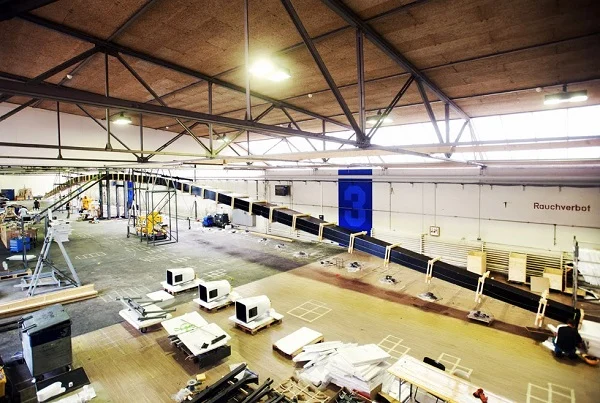The Solar Impulse HB-SIA that hop-scotched across America earlier this year, finishing its epic, sun-fueled cross-continent journey in early July, has since been broken down, packed into a jumbo jet and returned to Europe. An ocean was too big a hurdle for this plane – but come 2015, things could be different for the Swiss team of adventurers.
Solar Impulse is at work on HB-SIB, the next generation of the solar aircraft, and it has the aim of circumnavigating the globe two years from now.

The wing spar for the next-generation HB-SIB, more than 70 meters long, underwent successful testing this summer in Switzerland (image via Solar Impulse)
That bid got new backing this week with the announcement that Google was joining Solar Impulse as its “Official Internet Technology Partner.” That means you can expect Solar Impulse tie-ins with Google Earth, Google Glass, Google Hangouts,Google+ and YouTube – and it apparently means more than that for the not inexpensive undertaking.
Solar Impulse didn’t specify any dollar figures, but it said of the Google partnership: “Financially, this is also an important milestone in our program. It marks a new chapter and illustrates the interest raised worldwide by Solar Impulse as we have now a large US company joining our existing Swiss and European Partners.”
Meanwhile, back in Europe the engineers working on the HB-SIB reported a milestone achievement last month with a successful stress test of the aircraft’s 70-meter wing spar. This was no sure thing – in July 2012 this central part of the airplane’s wing broke under the weight of the test.
In order to make it around the world, the HB-SIB will come with a cockpit that will allow the pilot to fully recline, a big change from the HB-SIA, which left the pilotseated for the duration of flights. This should allow for flights of four to six days. Other key changes: an increased payload; isolation of electrical circuitry to enable flights in rain; and system redundancy to improve reliability.
The goal is to have the plane built by the end of this year, then use 2014 for testing.






